I have completed sewing a silnylon version of my 10 x 10 tent (actually 3 x 3 metres) out of some 1.25 0oz/yd2 (43 gsm) silnylon I sourced from China for US$2.50/metre. The key to understanding how it works is where to put the tie-outs. The photos below show it erected as a tent (for two). As with all my tents the idea is that it can be heated with a fire out the front and you can enter and exit standing up. There are other options, eg as a larger open (diamond) shelter and two hammock tarp configurations.
More photos as I update the post over the coming days – so come back and take a look. I may need to add some more tie-outs and I definitely need to make a small bag for the tent stakes and a larger one for the tent itself. Maybe I will also add a clothes-line. Here I am using an approx 7′ x 4′ piece of .8 oz/yd2 spinnaker fabric to complete the floor.
The dogs are really loving it and are keen to be off on a hike somewhere (which I don’t think is illegal (yet) at this stage of the coronavirus epidemic. As we would not be encountering other people at all (the normal situation for us) from when we leave home to when we return I don’t see the problem, but if we should need help due to a breakdown or ill-health we could become a nuisance at best. Anyway we are happy at home here on the farm and will do some camping out at home (maybe up the creek) in it just to try it out.
Just a stroll around the tent. The tent is a square with tie-outs at each of the corners and half way along each side (for a start). In this configuration you peg down to the ground half way along one side and tie up (half way along the opposite side) to a pole approx 5’6″ off the ground. I like to be able to stand up in a tent.
You then pull out and peg down the other half way points on each side. Two flaps of excess material pulled underneath form the back floor. The piece of (whitish – I have had it for many years) spinnaker fabric forms the front floor that the dogs are lying on. I can use two hiking poles as the tent pole as shown here: How to Make a Tent Pole.
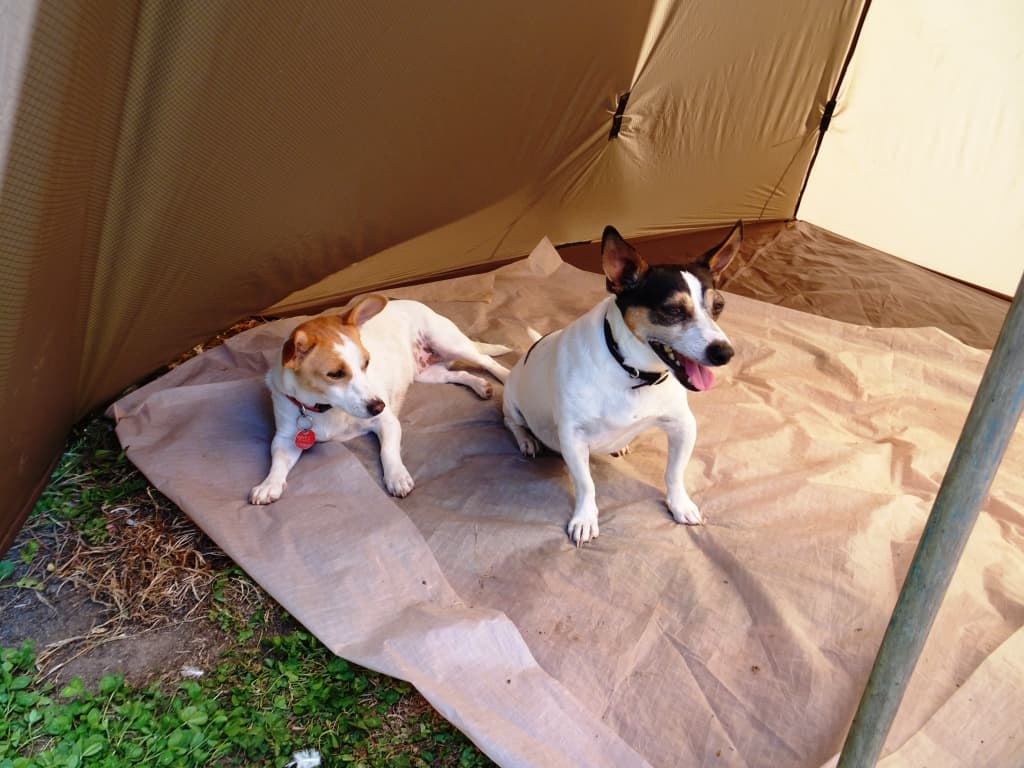
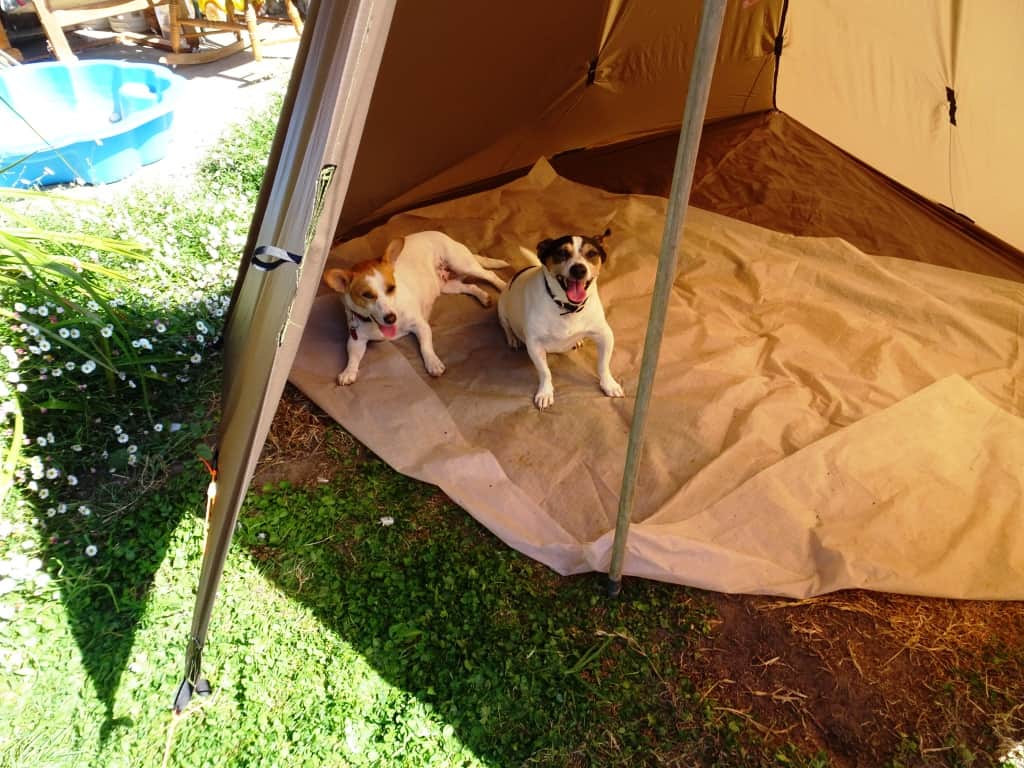
I have just tied the two front guys to the pole with a simple clove hitch and pegged them out. The tent now stands up by itself (after putting only one peg in the ground!) I like simplicity: things that go up easily but will not come down by themselves in the same way!
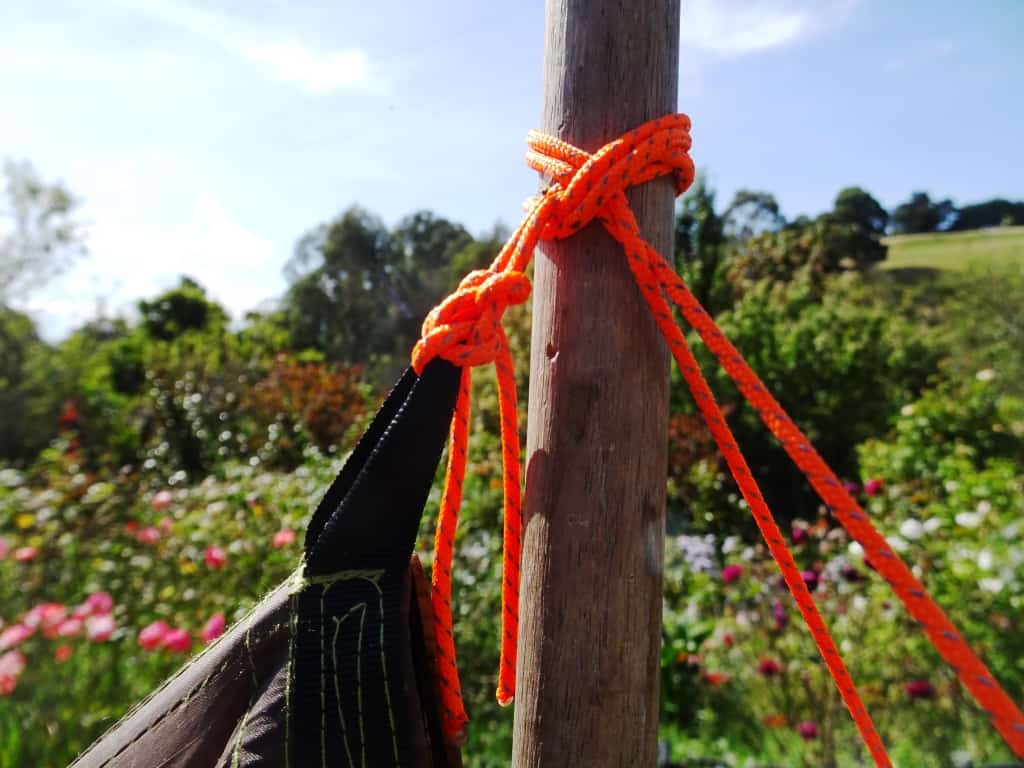
It is an easy matter to add the other pegs in turn. First the two at the middle of the other two sides, then a couple more on the front flaps (which can be opened up more, or closed right up).
Usually there is no need. It is pleasant to watch the fire out front through the part-opened flaps. Any rain comes from the back anyway and scarce ever goes into the tent. We have camped out in all sots of weathers in shelters roughly of this type for over forty years.
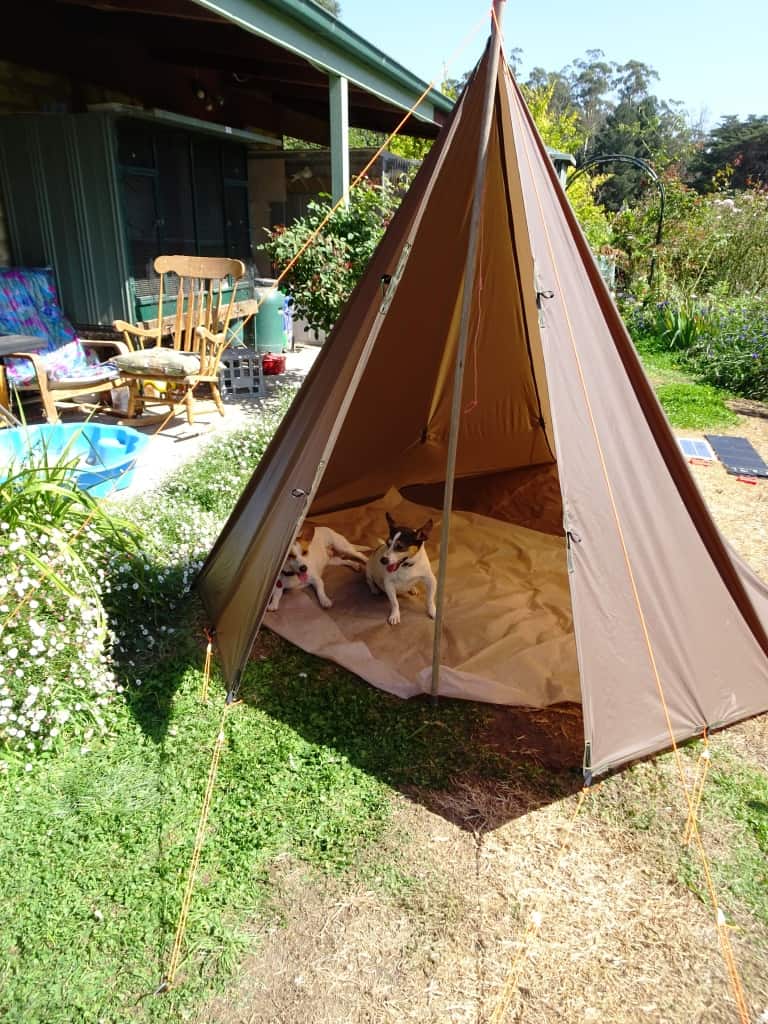
You may notice two solar panels lying on the ground at the rear of the tent. I am conducting some experiments with solar charging which will form the basis of a future post.
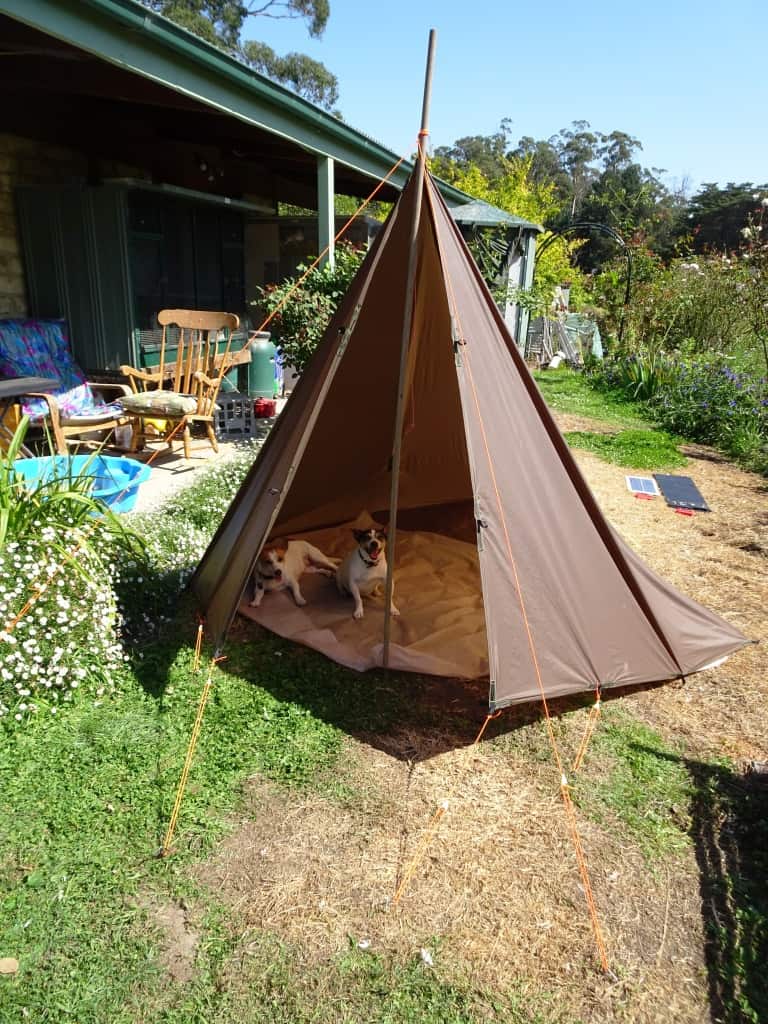
Walking around the tent anti-clockwise (looking down): a view of the rear side.
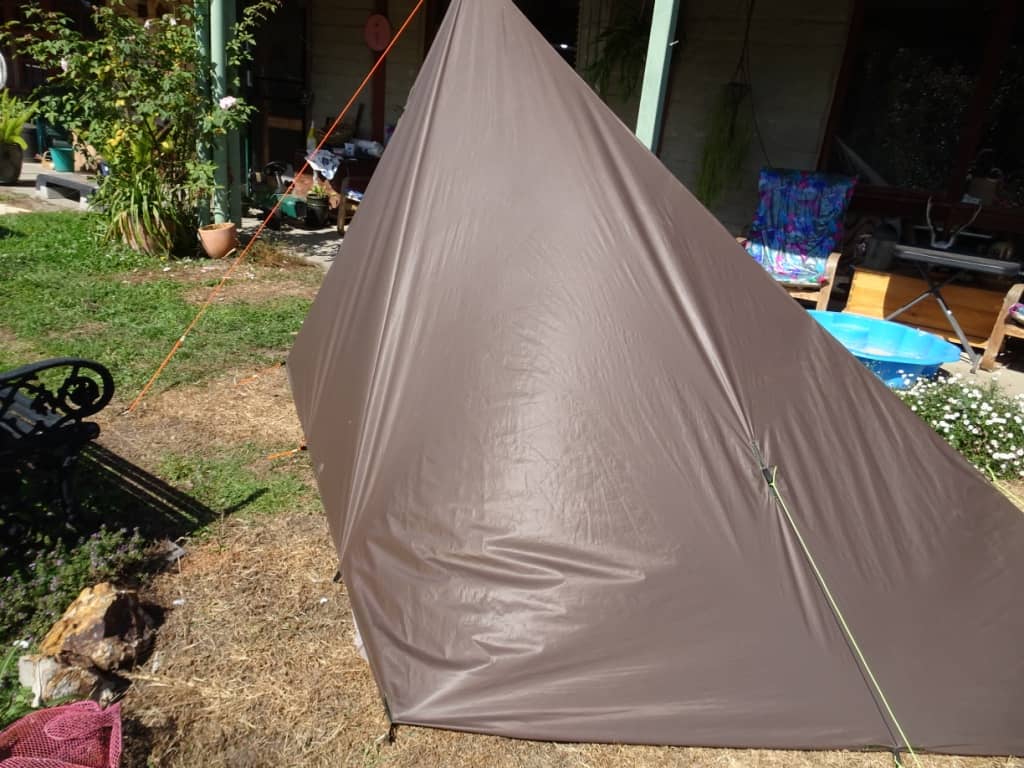
And the rear. You can see I have sewn tie-outs on the mid-point along the bottom edges, and three other tie-outs just to keep the material from falling onto our feet when we sleep (with our head up near the pole). I have a dual tent peg arrangement here to secure the tent in strong winds. The backbone of the tent should stand up well enough because of this rear tie-out that I should be able to add a clothes line inside along the centre.
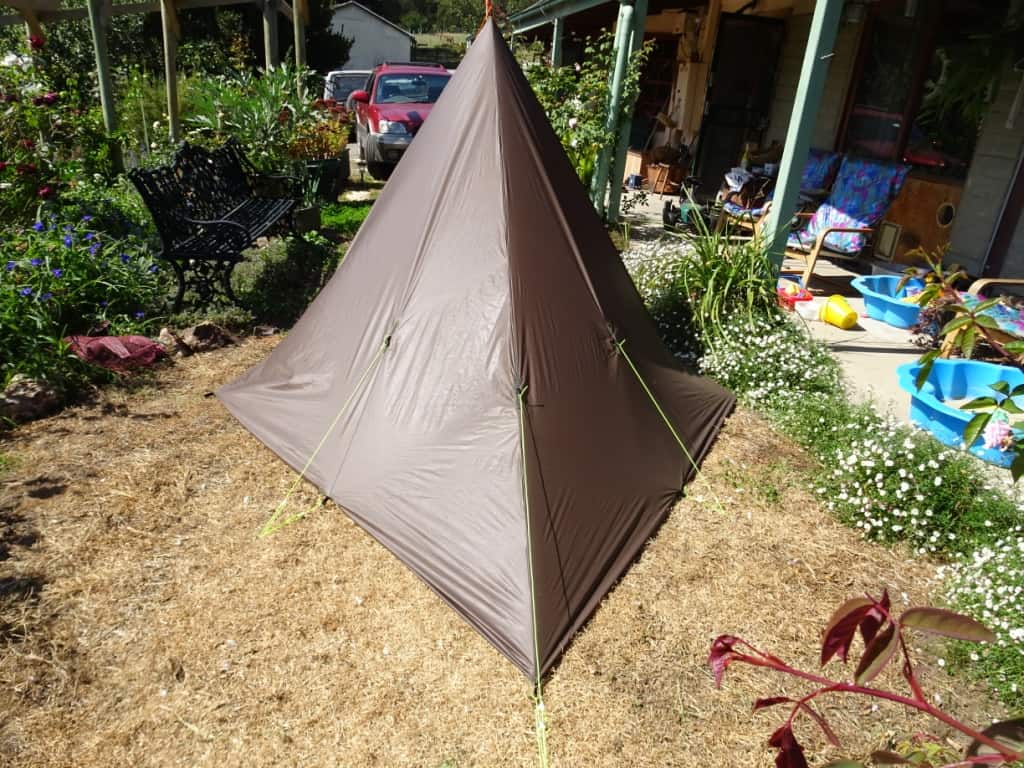
View of the other side.
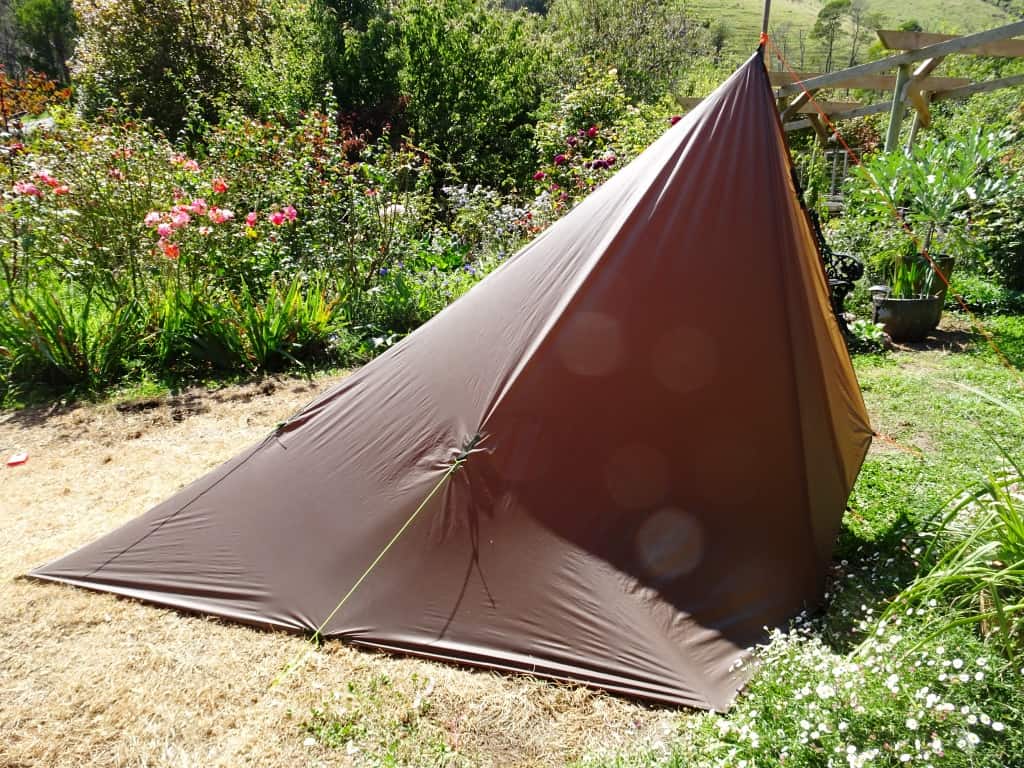
And back to the front again.
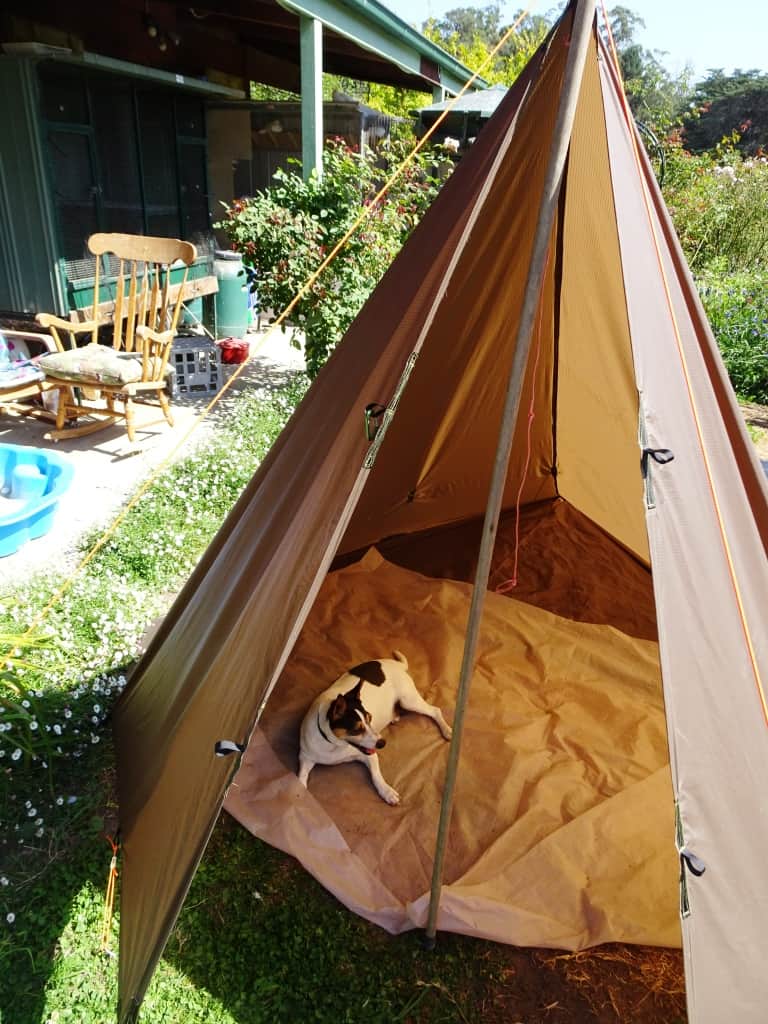
I managed to source this (approx 43 gsm) silnylon from a Chinese supplier for US$2.50 per metre. There are 6 metres here (or US$15 worth) plus some gross-grain ribbon for the tie-outs and reinforcing, some glow in the dark guyline and some similar clam cleats. Less than US$20 worth anyway – and a few hours sewing. Good practice as a beginner project. I used heavier ribbon for the tie-outs and reinforcing than I usually do as it was what I had (and I don’t want to go on any unnecessary shopping trips because of the quarantine just now). It will make it stronger anyway (if maybe 50 grams heavier).
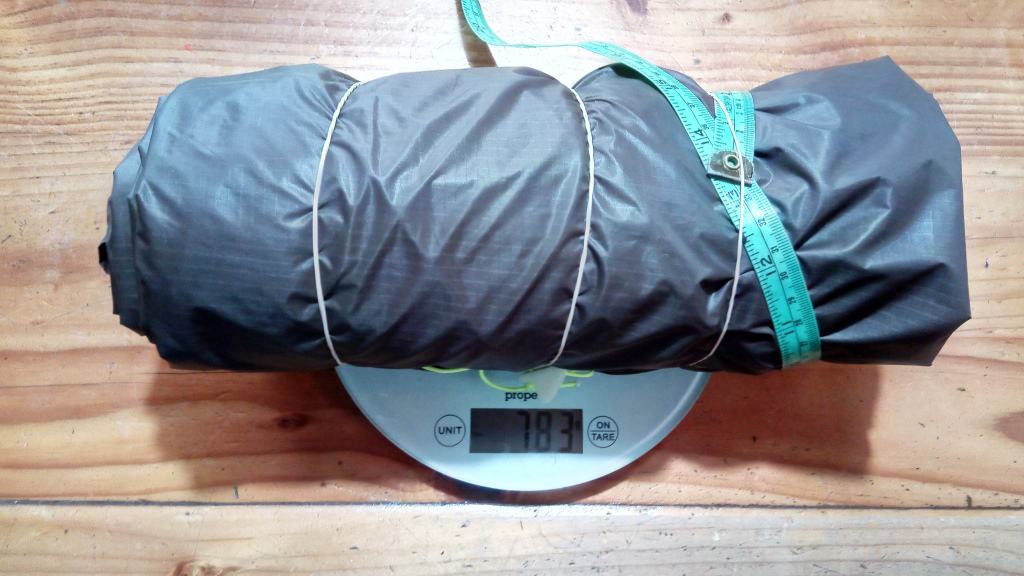
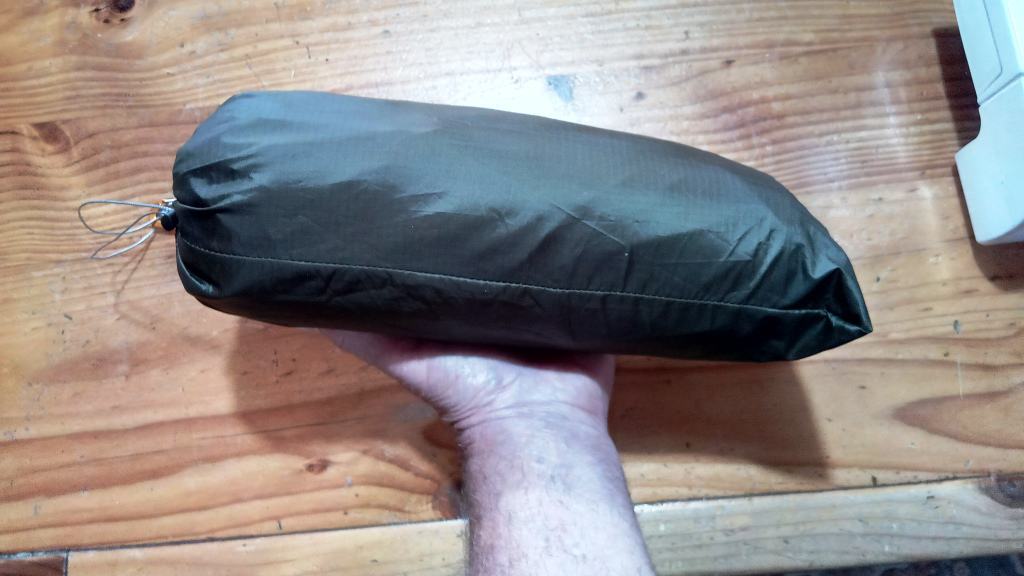
The 8′ x 5′ spinnaker fabric floor weighs 101 grams. The 18 (approx 8 grams ea) pegs (so I can double up on all windward anchor points) weigh 153 grams including their stuff sack. The stuff sack/s weigh approx 7 grams.
The tent alone weighs 527 grams (with guys and luminous line locks). Obviously it could weigh less out of 1 oz fabric or even .77 oz fabric probably 375 grams. Anyway I would save 152 grams on the fabric alone. I could also carry many fewer pegs – or none at all (and make them out of bush sticks (as with the pole).
I could also use a lighter (and smaller) groundsheet, eg Polycro at perhaps 25 grams (so down another 76 grams) – so it could be 375 + 25 grams = 400 grams. Pretty good for a tent for two you can stand up in which can also be used as a hammock tarp. I guess the guys could also be lighter, or shorter…but sometimes I like something which is no trouble and which I know is bullet-proof.
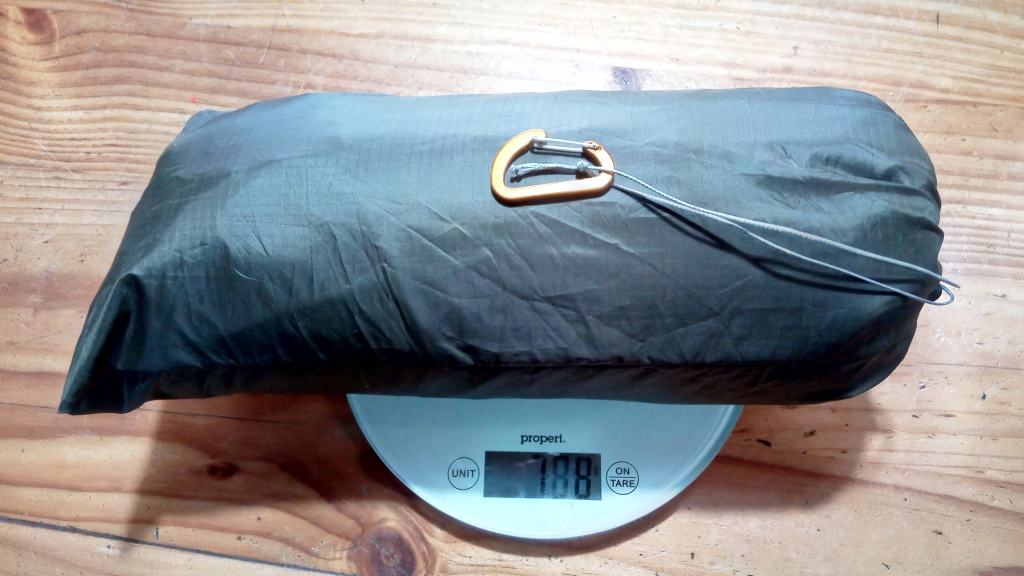
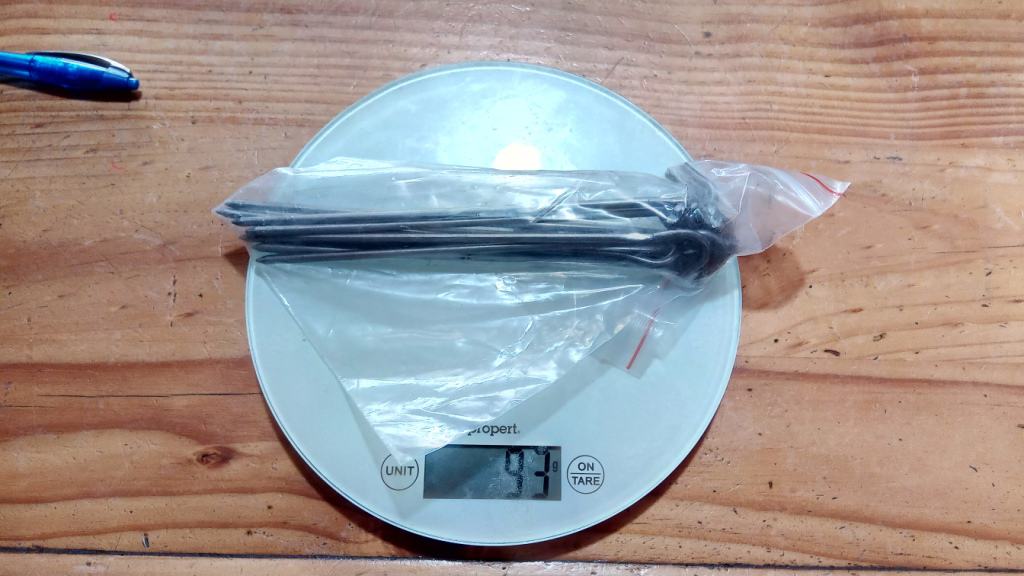
Even in this weight fabric, if I left the floor and pegs at home it could weigh about 550 grams in my pack. Its total length is 10′ (3 metres) and at its widest point it is 7′ 6″ (2.3 metres). Lots of room for two people, two small dogs and lots of gear. If I carry one hammock my shelter will still be under 750 grams.
There will also be room for a small stove inside, the Miniature Dome Stove (which is being made by Tim right now – I have had photos of the work in progress, and will be completing a post about it soon too).
BTW: The Tyvek version with 7′ x4′ Tyvek floor, complete with guylines and 18 x 6″ shepherd’s hook titanium pegs weighed 983 grams:
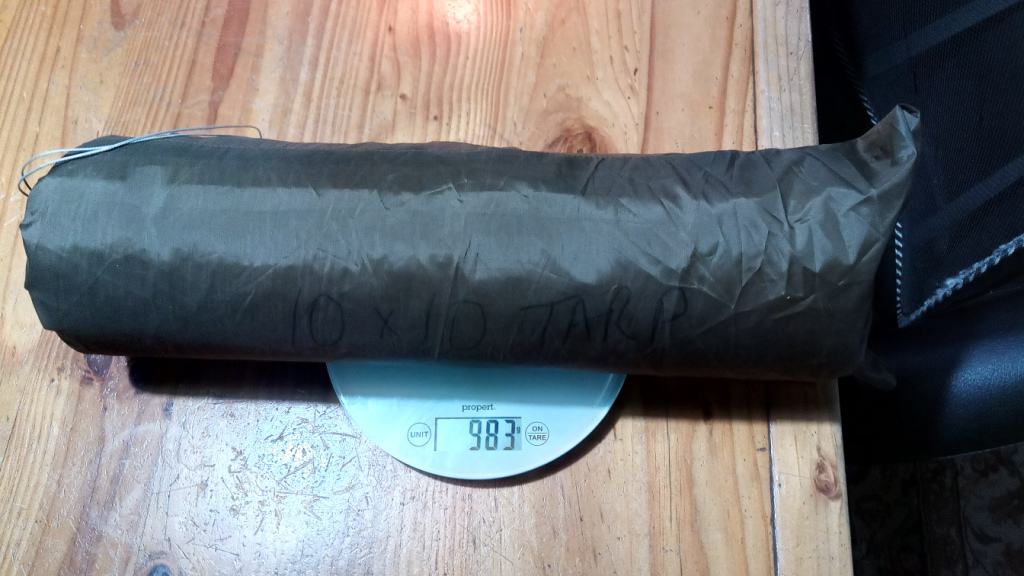
I will add the hammock configuration later, so do come back.
https://www.theultralighthiker.com/2019/09/06/two-great-poly-tarp-configurations/
https://www.theultralighthiker.com/2019/09/24/10-by-10-tarp-update/
https://www.theultralighthiker.com/2019/05/25/seamless-tyvek-tipi/
https://www.theultralighthiker.com/2020/03/16/how-to-make-a-tent-pole/
https://www.theultralighthiker.com/2020/02/21/amps-are-everything/

Hi Steve, Great post and I look forward to your further additions. Could be some time before you try out the stove with this virus in our world.
I suppose the issue that is in the back of my mind is if the Tyvek is condensation free you can use much more of the floor plan area without getting wet. If condensation is introduced by the silnylon (as with my tents), that saving in weight may be a false economy. Your identical tents made of different fabrics will let you answer this condensation question by setting them up side by side on your lawn and observing the condensation over time.
Thanks,Tim
Looking forward to the stove Tim. I will try that comparison soon Tim. It is a good suggestion. However I added three side and end tie-outs to keep the fabric off us. That and some bags of gear shoved up against it usually work well enough. Cheers, Steve.